MSI Z77A-GD65 Gaming Series Motherboard Review
MSI Z77A-GD65 Gaming Motherboard Layout & Features
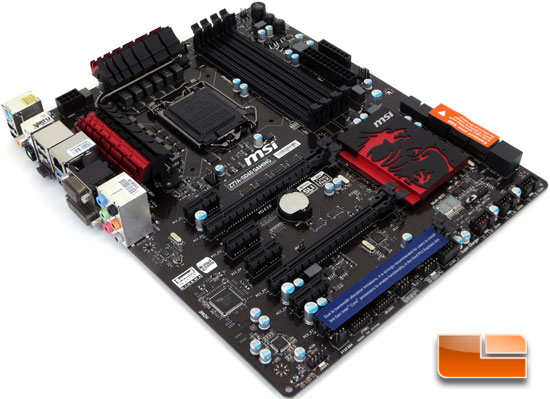
While I’m not one to make a purchasing decision on looks, the look of the MSI Z77A-GD65 Gaming could certainly put me over the edge if I were debating between this motherboard and another. The mostly blacked out look with a few red accents is sharp looking, add in the Dragon and I’m nearly sold. Now before you put to much weight on my preference of aesthetics, keep in mind that if it doesn’t perform well, it won’t matter how good it looks! It won’t end up in my system.
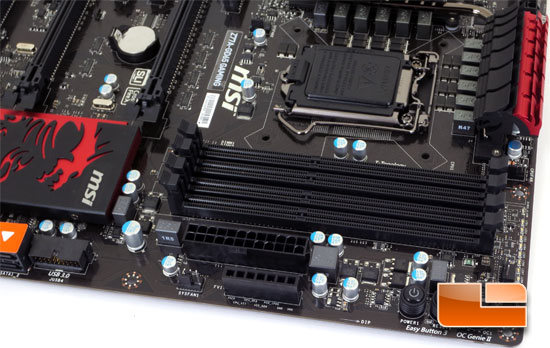
Looking at the first corner of the MSI Z77A-GD65 Gaming Series motherboard there are a number of features worth mentioning. In the corner we can see the Easy Button 3 set up which consists of the onboard power button, reset button and OC Genie II button. To the immediate right of the DIMM slots we can see we have the 4pin CPU fan header, a 3pin system fan header, and a series of 9 LEDs. The topmost LED is the DrMos alarm while the remaining eight LEDs indicate the number of phases that the CPU is currently using.. The four DIMM slots on the MSI Z77A-GD65 Gaming motherboard supports up to 32GB of DDR3 RAM at speeds up to 3000MHz(O.C.). Below the 24pin motherboard power is the V-Check points. The V-Check points allow us to check the VCCP, CPU VTT, CPU Graphics, DDR VCC, and the PCH 1P05 voltages.
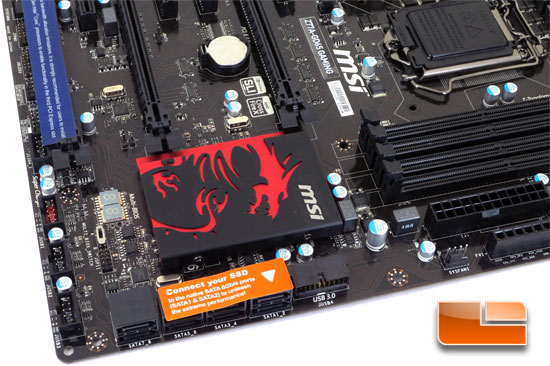
Along the leading edge of the MSI Z77A-GD65 we have the internal SuperSpeed USB 3.0 controller. One of the features that really caught my eye was the SuperSpeed USB 3.0 port, it comes off the board parallel to the board making it much easier to hide the USB 3.0 cable. It’s little things like that which can really make or break the layout of the board. Looking at the SATA ports, the MSI Z77A-GD65 Gaming Series motherboard has a grand total of eight SATA ports. The right SATA ports are SATA III 6Gbps which are native to the Intel Z77 chipset along with the four black SATA II 3Gbps ports. The remaining two SATA ports are SATA III 6Gbps as well, though they are controlled by an ASMedia ASM1061 chip. Along the left edge of the MSI Z77A-GD65 we have three sets of internal USB 2.0 headers. To the right of the USB 2.0 headers we can find the switch to bounce between the different BIOS chips.
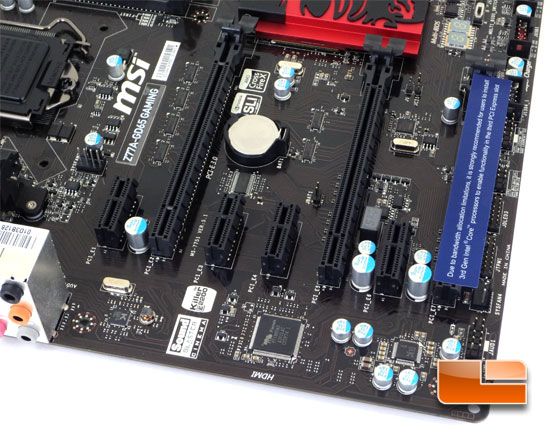
The MSI Z77A-GD65 Gaming motherboard features three PCIe x16 Gen 3.0 expansion slots and four PCIe x1 slots. Along the edge of the MSI Z77A-GD65 we can see the blue internal IEEE1394a (Firewire) header, front panel headers, Voice Genie connector (JDLED3), Trusted Platform Module, a 3pin system fan header, and the internal header for the front panel audio. Swinging around to the bottom edge of the MSI Z77A-GD65 Gaming we can see the Realtek ALC898 high definition audio codec, Fintek F71889AD Super I/O controller, and the Killer E2200 Gaming Ethernet controller.
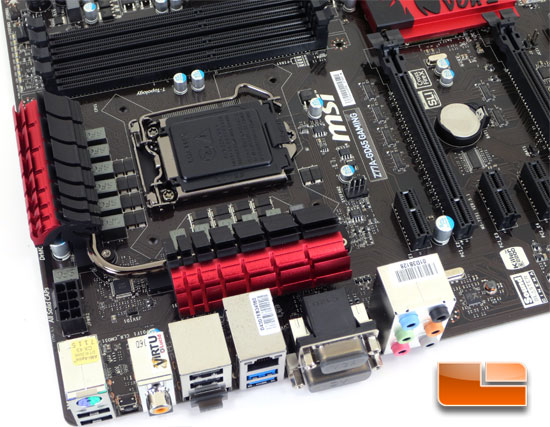
The MSI Z77A-GD65 has a single 8pin CPU power plug to supply power to the LGA1155 processor. To the left of the LGA1155 socket we can see that the Z77A-GD65 is using Super Ferrite Chokes.
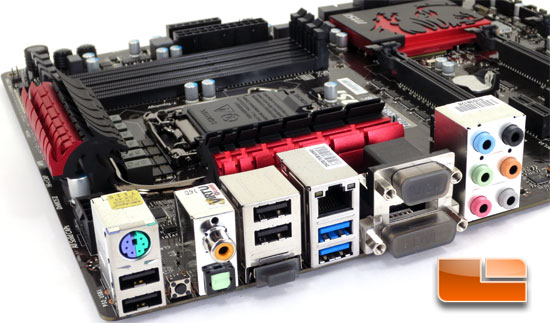
The I/O panel for the MSI Z77A-GD65 relatively typical, though MSI has upped the quality of the pair of USB 2 ports below the PS/2 port. MSI has dubbed these as Gaming Device Ports and they are optimized for high polling rate mice which lowers the mouse responce time from 8 milliseconds to 1 millisecond. Next to those we have a rear I/O panel clear CMOS button (ever so handy when overclocking), optical and coaxial SPDIF out ports, a second pair of traditional USB 2.0 ports, and HDMI port, a pair of Intel Z77 Controlled SuperSpeed USB 3.0 ports, Killer E2200 Ethernet, DVI, VGA 15pin D-Sub, and the traditional six 3.5mm audio jacks.

Comments are closed.